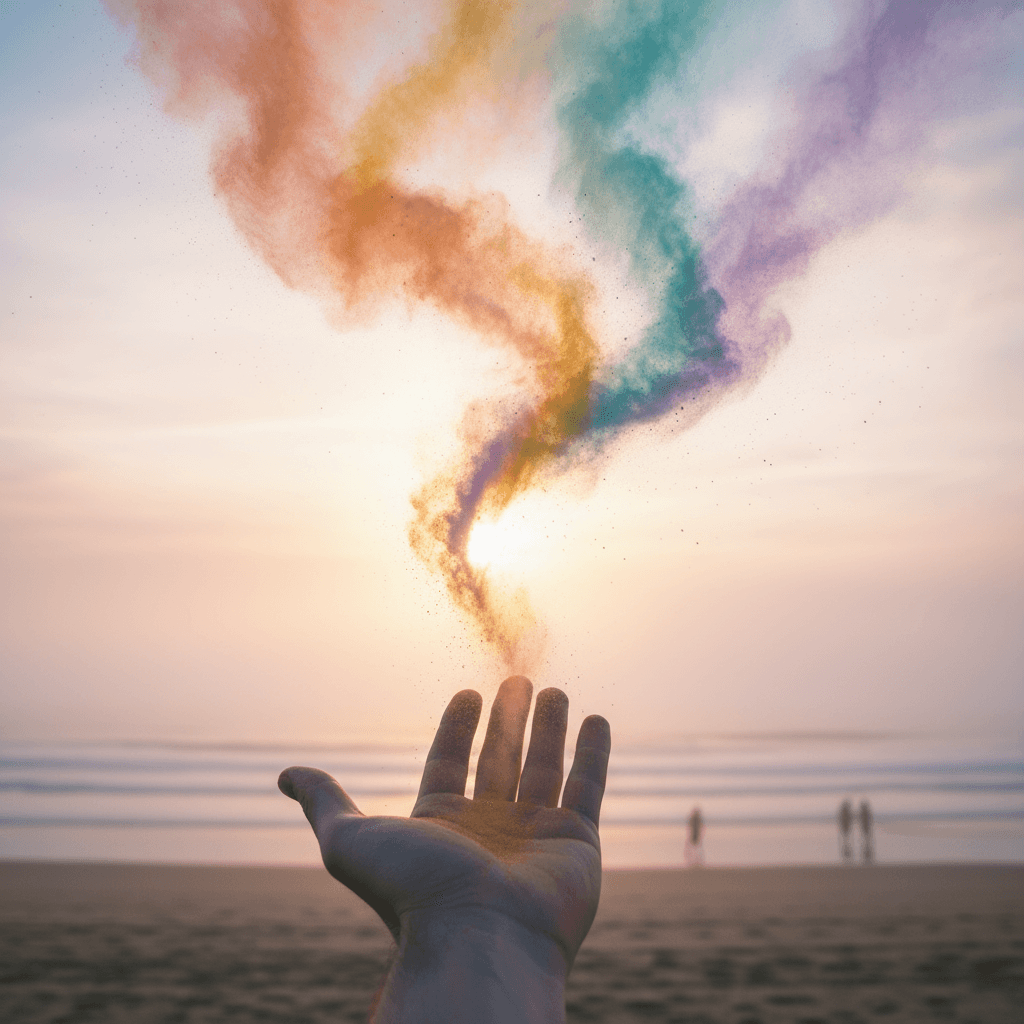Open Hands, New Beginnings in Living Color

Open your hand to the world and let its colors teach you how to begin again. — Rumi
The Gesture of an Open Hand
Rumi’s invitation begins with a bodily metaphor: unclench your fist. A closed hand clutches, defends, and measures; an open hand receives, offers, and learns. In Sufi vocabulary, this is the move from control to trust, from tight self-will to tawakkul—confidence that wisdom can arrive from beyond our plans. Thus, the first lesson hides in the posture itself: when grasping relaxes, attention awakens, and the world can meet us halfway.
Colors as Teachers of Multiplicity
With the hand open, the world’s colors become instructors. Rumi often points to ordinary phenomena—the reed flute’s lament in the Masnavi’s opening (Mathnawi I.1–18), the market’s clamor, the turning seasons—to show that multiplicity is not noise but curriculum. In Sufi thought, diverse hues hint at the many “faces” of the Real, or tajalliyat, manifestations that educate the heart through contrast. Consequently, difference stops threatening us and starts refining us, because each shade reveals a new angle on truth.
Beginning Again as Sacred Return
If colors teach anything, it is how to start over without shame. Rumi frequently frames renewal as return—tawba—not a one-time apology but a rhythmic homecoming. His poem “The Guest House” (13th c.) urges us to welcome each emotion as a visitor, implying that fresh arrivals prepare fresh departures. Beginning again, then, is less a reset button than a spiral: we revisit the center after every encounter, slightly wider and wiser for having been dyed by new color.
From Control to Curiosity: A Psychology
Modern research quietly corroborates this mystical hunch. In personality science, openness to experience predicts learning and creativity (McCrae & Costa, 1997), while psychological flexibility supports resilience across adversity (Kashdan & Rottenberg, 2010). Carol Dweck’s work on growth mindset (2006) further shows that regarding difficulty as information, not indictment, fosters mastery. Taken together, these findings suggest that Rumi’s “open hand” is not only poetic; it is an evidence-backed stance where curiosity displaces defensiveness, enabling renewal.
Practices for Learning from Color
To translate metaphor into muscle, begin with attention rituals. Each morning, name three colors you notice and the feelings they evoke; let them set a tone for the day. When you feel yourself clench—jaw, shoulders, schedule—pause for three breaths and ask, “What is this moment trying to teach?” Convert openness into action with a daily open-hand gesture: share a resource, ask a sincere question, or make a small gift. Finally, keep a “palette journal” of sketches, photos, or lines that capture how each day has colored you.
A Shared Palette: Community Renewal
Yet renewal ripens fully in company. An open hand implies exchange, the civic art of giving and receiving across difference. Philosophies like ubuntu—“I am because we are”—echo Rumi by treating the community as a canvas where many hues coexist. After crises, neighbors often self-organize to meet needs, a pattern documented in Rebecca Solnit’s A Paradise Built in Hell (2009). In this light, beginning again becomes communal: we repaint the future together, each person’s color deepening the whole.